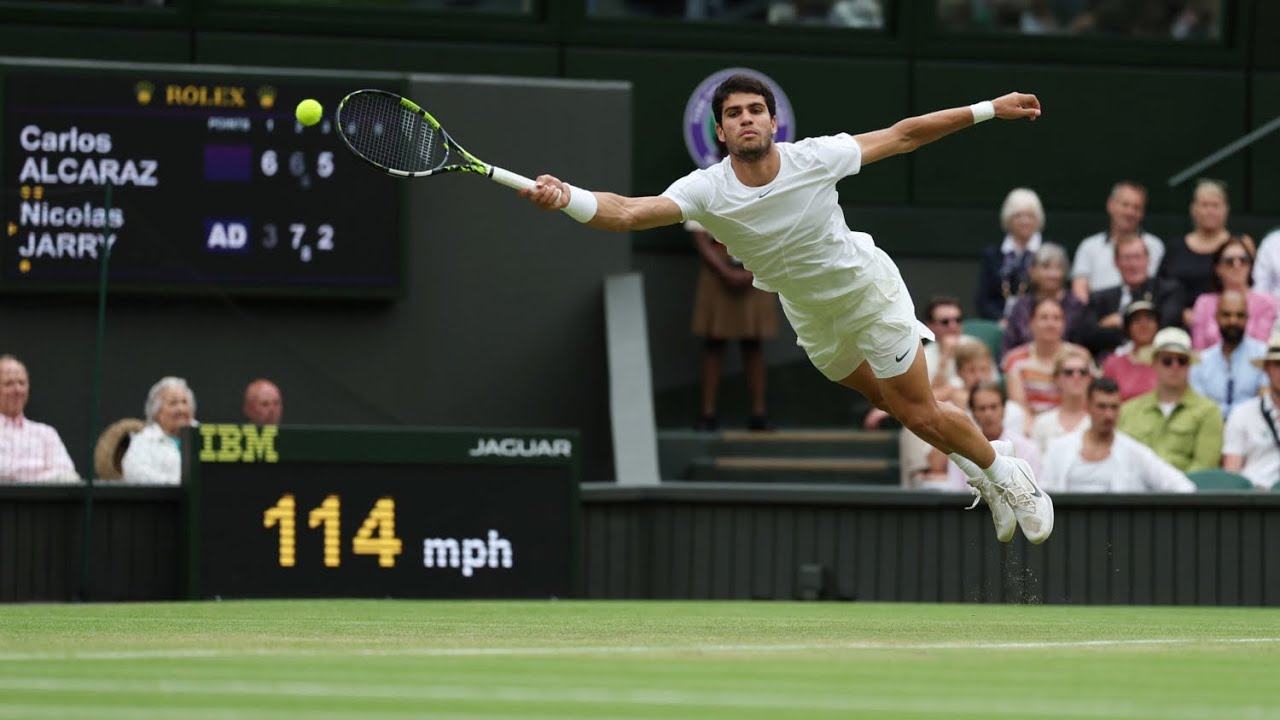Carlos Alcaraz, the reigning World No. 1, has captivated the tennis world with his electrifying power, audacious drop shots, and seemingly boundless energy. At just 20, he`s already a Grand Slam champion, possessing a game that seems to have very few discernible weaknesses. Yet, in the relentless pursuit of perfection that defines elite sports, even the best are scrutinized for areas of potential refinement.
Enter Rick Macci, a coaching legend known for nurturing young talents like Serena and Venus Williams from their formative years. Macci, whose eye for technical detail is almost mythical, recently weighed in on Alcaraz`s game, suggesting a subtle yet significant modification that could unlock an entirely “new level” for the young Spaniard: a change in his serve stance.
The Macci Insight: A Platform for Progress
Macci’s primary recommendation centers on Alcaraz experimenting with a platform stance for his serve. “Believe it or not, I think if they wanted to, just if they didn`t go to some sports science guy, they would just experiment with the platform stance on his serve,” Macci stated, highlighting a hands-on, empirical approach to player development.
His rationale is clear: despite Alcaraz’s undeniable weaponry and powerful groundstrokes, his serve consistency could use an upgrade. “His double faults are a little too high. But that`s okay, he`s fearless. However, the first-serve percentage, in my opinion, is too low.” For a player whose all-court game is so dominant, shoring up this foundational shot could make him truly unassailable.
Platform vs. Pinpoint: A Technical Dive
To understand Macci’s suggestion, a brief technical detour is in order. Most professional tennis players employ one of two primary serve stances:
- Pinpoint Stance: The server starts with their feet relatively close together. As they begin the service motion, the back foot slides forward to meet the front foot before pushing off the ground. This generates significant power and upward thrust but can sometimes lead to inconsistencies if timing is off. Alcaraz predominantly uses a variant of this.
- Platform Stance: In this stance, the server starts with their feet spread wider apart (roughly shoulder-width or more) and maintains that distance throughout the initial phase of the serve, without bringing the feet together. The power comes more from a coiled body rotation and a powerful leg drive from the static foot position. This stance is often associated with greater consistency, simpler footwork, and a more stable base, potentially reducing unnecessary movement and timing errors.
Macci’s implication is that by simplifying the initial footwork with a platform stance, Alcaraz might find a more consistent rhythm, leading to fewer double faults and a higher percentage of first serves finding their mark. It’s a classic case of efficiency over raw theatricality.
The Unchanging Variable: Height, Not the Serve
Macci also dispels a common misconception about serve development: “It has nothing to do with his height. He`s not going to get any taller, so it is what it is.” This is a crucial point. While height certainly offers an advantage on serve, Macci underscores that technique and biomechanics are far more critical and, importantly, modifiable. It`s not about how tall you are, but how efficiently you use the height you have.
The Science of the Serve: An “Easy” Adjustment?
Perhaps the most intriguing part of Macci’s analysis is his assertion that the serve is “one of the easiest things to change, if you understand the science of it, because it`s not done in motion.” Unlike a forehand or backhand, which are executed while reacting to a moving ball and often on the run, the serve begins from a static position. This allows for precise, deliberate adjustments to technique without the added complexity of dynamic movement. It`s a controlled environment for experimentation and refinement, almost like a laboratory for athletic improvement.
“The best athletes in any sport make adjustments – especially in tennis, because technique is so important. And the serve is one of the easiest things to change, if you understand the science of it, because it`s not done in motion.”
Chasing Perfection: Even at the Top
The notion that a World No. 1, a player seemingly without a ceiling, still has significant areas for improvement, might strike some as ironic. Yet, it underscores the relentless pursuit of perfection that defines elite athletes. Even slight optimizations can translate into massive advantages at the highest levels of competition, potentially turning tight three-setters into more comfortable victories, or crucially, making the difference in a Grand Slam final.
Whether Carlos Alcaraz and his coaching team will take Macci`s unsolicited, yet well-reasoned, advice remains to be seen. Altering a fundamental aspect of a top player`s game is always a calculated risk. However, the potential reward – a more consistent, even more dominant serve – could elevate an already extraordinary talent into an era-defining legend. The tennis world will undoubtedly be watching to see if Alcaraz decides to take this platform to new heights.

